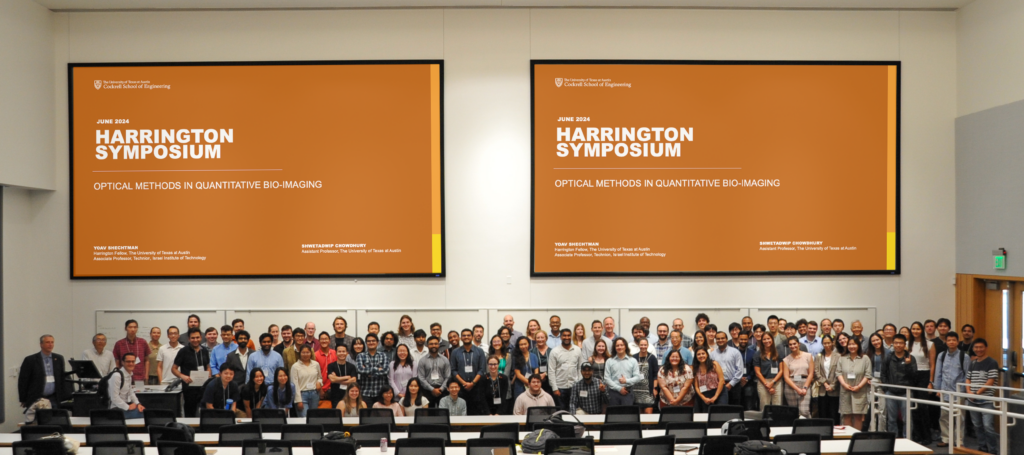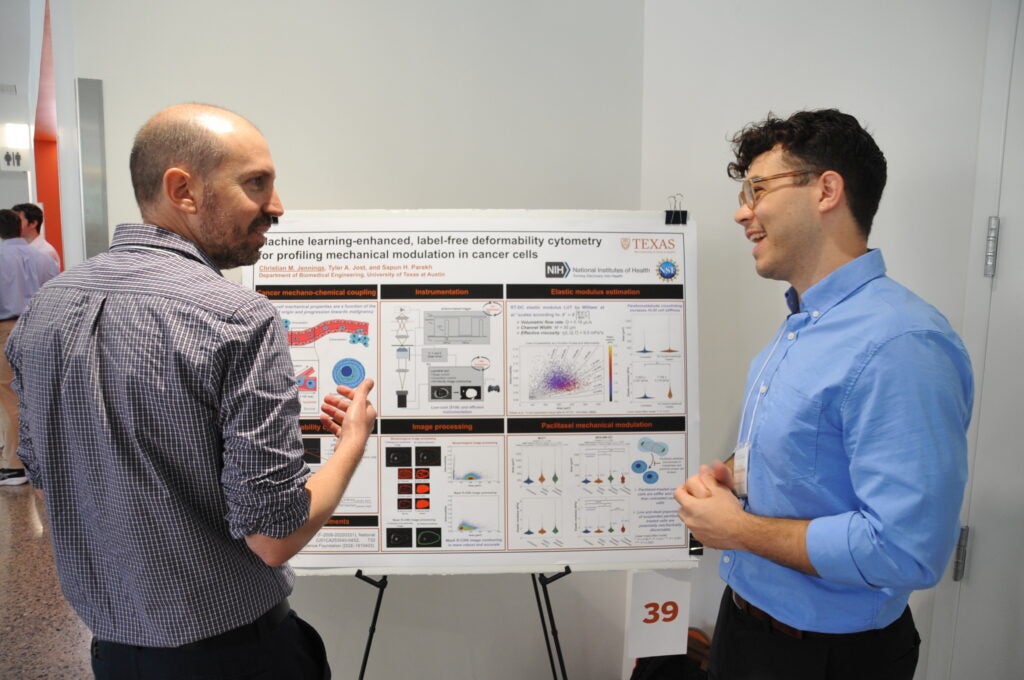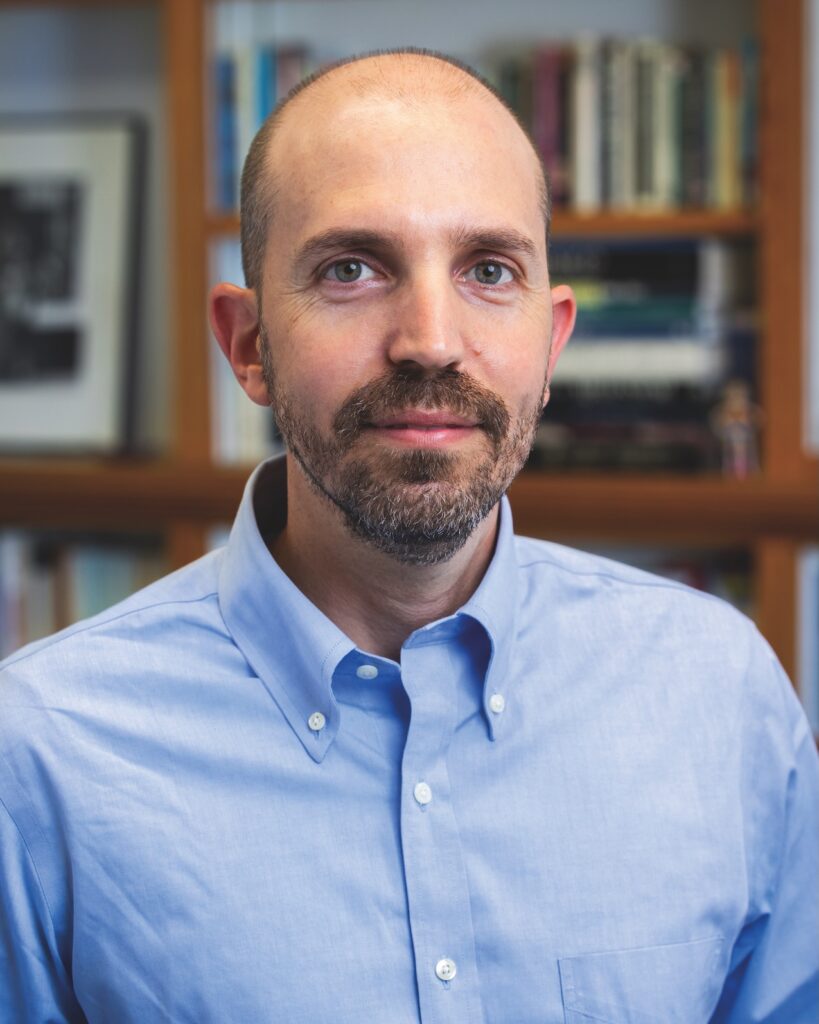
Bold ingenuity. Eager curiosity. The Harrington Fellows Program draws early career faculty from around the world to The University of Texas at Austin to pursue their research and collaborate with colleagues. Visiting Fellows are provided a stipend for the academic year that covers their salary, relocation expenses, full medical benefits and key spending related to the program.
Dr. Yoav Shechtman, an associate professor in the Department of Biomedical Engineering at the Technion-Israel Institute of Technology, crossed the globe to partake in the Donald D. Harrington Fellowship after learning about it from a colleague.
The support and the freedom enabled by the Harrington fellowship allowed me to dedicate time to topics that would otherwise be challenging for me to pursue.
He continued, explaining that his computational microscopy research focuses on creating methods that enable new capabilities in micro/nanoscale optical imaging (a technique that uses light to image objects at the micro and nanoscale), such as 3D imaging and super-resolution microscopy. These techniques are often used to observe the 3D structure of biological samples in high resolution, allowing researchers to study the morphology of complex biological structures and dynamic processes. The flexibility of Harrington enabled him to spend time using and developing machine-learning based computational imaging tools that normally his students work on.
“I could finally delve into details and play with the code myself, which generated new ideas and research directions that my group is now pursuing,” he explained. “More generally, simply immersing yourself in a new environment and interacting with local researchers is a refreshing and illuminating experience that I recommend to anyone who has this opportunity.”
While at UT Austin, Shechtman collaborated closely with Dr. Adela Ben Yakar, Professor in the Walker Department of Mechanical Engineering, on various projects pertaining to computational optical modeling and generative artificial intelligence for data augmentation in microscopic image processing. They started developing novel microscopy tools in an ongoing project with potential applications in drug screening, neuroimaging and more.

Along with their research, Harrington Faculty Fellows are given the opportunity to organize a symposium on a topic of their choice. Shechtman jumped on the chance — launching a one-and-a-half-day event to explore innovations in optics that have real-world applications in areas spanning neuroimaging, spectroscopy, cellular imaging, optical fabrication and protein sequencing. Co-organized with Dr. Shwetadwip Chowdhury, assistant professor in the Chandra Family Department of Electrical and Computer Engineering, the symposium boasted three speakers from UT Austin, 12 speakers from other leading U.S. institutions and two international speakers. Approximately 100 guests attended, including students, postdocs and researchers.

“The event was a huge success in my opinion, actually exceeding my original expectations. Almost all invited speakers agreed to come, the talks and posters were excellent, and the engagement of the audience was incredible,” Shechtman described.
In addition to Harrington’s support, Shechtman also expressed his gratitude for the support the symposium received from the Walker Department of Mechanical Engineering, the Chandra Family Department of Electrical and Computer Engineering, and the Department of Biomedical Engineering.
Learn more about the Harrington Fellows program by visiting https://harrington.utexas.edu/.